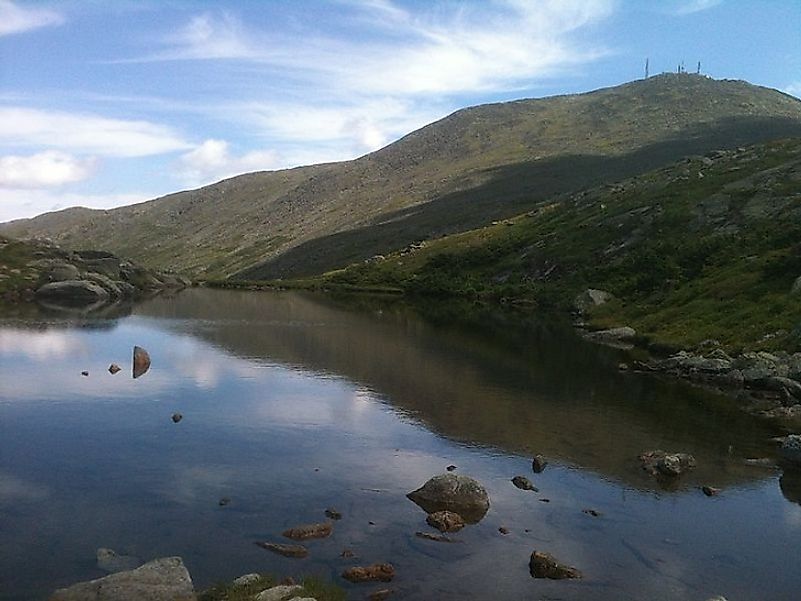What Do You Know About New Hampshire's Mount Washington?

5. Description
The highest point in the Northeastern United States is famous for its steep roads and "cog railway". It tops all of the other peaks in the region at 6,288 feet in elevation. Although it maintains a reputation for unpredictable weather, it still attracts a great deal of tourists who enjoy outdoor activities such as bicycling, road races, running, and hiking. The trails of Mount Washington also cross into the Appalachian Trail. There's also an automobile road that reaches its eastern summit, while a train goes up its western side. Mount Washington is partly inside the Mount Washington State Park, and is situated in the White Mountains.
4. Historical Role
In 1524, explorer Giovanni da Verrazzano first sighted the peak of Mount Washington from an Atlantic Ocean vantage point aboard his ship. The original inhabitants were the Abenaki Indians, who revered the mountain as a holy place. However, in 1642 a mountaineer named Darby Field climbed Mount Washington to prove to the Indians that it was possible to climb it. The oldest mountain trail there, named Crawford Path, still goes up to its summit. In 1821, Ethan Allen Crawford had a house constructed on the summit, which eventually was destroyed by a storm in 1826 but rebuilt in 1904. The summit can receive 300 mile per hour winds, and the weather is mostly rainy. In 1932, an observatory was constructed on site.
3. Modern Significance
Many outdoor activities attract tourists here, such as skiing in winter and hiking in the warmer months. Glider flying is also another popular event on the summit. Many facilities are also found on top of the mountain, and there's a shelter, cafeteria, gift shop, museum, and toilets among the amenities. There is also the railway train that takes passengers to the summit of Mount Washington. The Mount Washington Hillclimb Auto Race is another event that attracts thousands of tourists anually. In 1958, a radio transmitter was installed for an FM station on top of the mountain. The New England School of Art also uses the summit as a source of inspiration for its White Mountain artists.
2. Habitat and Biodiversity
Habitats vary on Mount Washington, from its colorful flowers to forests to the gray rock alpine summit in the White Mountains where Mount Washington is located. There are rocky ravines up the mountainside, as well as forested slopes. The green river valleys also dominate the lower areas of the mountain, while its northern Arctic tundra features unique alpine flora higher up. All of these, including the fauna there, are often subjected to its characteristically severe weather, which can change in a matter of minutes. Fauna that live in the many habitats of Mount Washington include moose, deer, bears, and foxes. There are also wild ducks and geese that inhabit the forested areas of Mount Washington. Several animals here are most active at dusk, when they feed before night closes in on the mountain.
1. Environmental Threats and Territorial Disputes
The alpine meadows and tundra offer a harsh environment for plants and animals to thrive, but nevertheless many of these survive, and even flourish, in the arctic conditions of Mount Washington. Human impacts on Mount Washington have been going for too long, and these have visibly affected many areas. This has caused some of the native flora and fauna species to be listed as endangered species. Stepping upon the alpine vegetation, which has often taken hundred years of growth to be established, can literally set back their populations centuries in a matter of only a few minutes. Avalanches and landslides also occur on the mountain, and these pose a danger to animal and human lives alike. The construction of facilities on the summit and the summit railway also affect the mountain's ecosystems.







